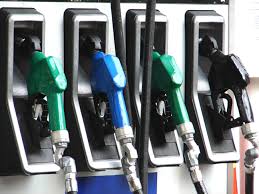
Gasoline prices have risen only a few cents in the wake of the U.S. killing of Iranian Major General Qassem Soleimani. The latest average price is $2.59 a gallon, up only one cent in the past week. Oklahoma gasoline prices remained at $2.26 per gallon, unchanged from a week ago.
In Oklahoma, the highest average is $2.55 a gallon in the southeast county of Hughes where the county seat is Holdenville. Drivers around Arnett in Ellis county are paying an average of $2.53 a gallon and drivers in Hollis, the county seat of Harmon county pay an average of $2.50 per gallon.
The lowest prices in the state are in Cotton county in the south where the average is only $2.12 a gallon. The average in Okfuskee County is $2.15 and drivers in Oklahoma County pay an average of $2.18.
Oklahoma City drivers pay an average of $2.21, down 3 cents a gallon from last week. Oddly, prices in Tulsa went up 4 cents a gallon, reaching $2.23 a gallon this week. Lawton drivers also saw a slight increase, paying 3 cents more at $2.21 a gallon.
Oklahoma’s average of $2.26 compares to $2.29 in Kansas; $2.63 in Colorado; $2.43 in New Mexico; $2.28 in Texas; $2.29 in Arkansas; and $2.21 in Missouri.
events. Crude prices spiked as high as $65.55 in after-hours trading on Tuesday, but price increases have since pulled back with WTI closing at $59.61 on Wednesday.
As the market continues to weigh the impact and risk of additional retaliatory actions that could lead to further escalation of tension in the region, WTI prices will likely continue to fluctuate. Wholesale gas prices have also fluctuated, causing a minimal impact on the national average. Since Monday, the national average for a gallon of regular unleaded gasoline has increased by two cents to $2.60. While there is still clear geopolitical tension, there is no immediate threat to crude supply domestically or globally that can support a sustained increase to crude oil prices or domestic wholesale gasoline prices.
The Energy Information Administration (EIA) released new gasoline data that showed demand declined last week to 8.13 million b/d from 8.96 million b/d during the previous week. Additionally, EIA’s weekly report showed that total domestic gasoline stocks grew substantially by 9.1 million bbl, bringing the current level to 251.6 million bbl. Typically, low demand amid rising gasoline stocks would put downward pressure on pump prices, but given the current tension between the U.S. and Iran, gas prices are seeing fluctuation, though minimal.





